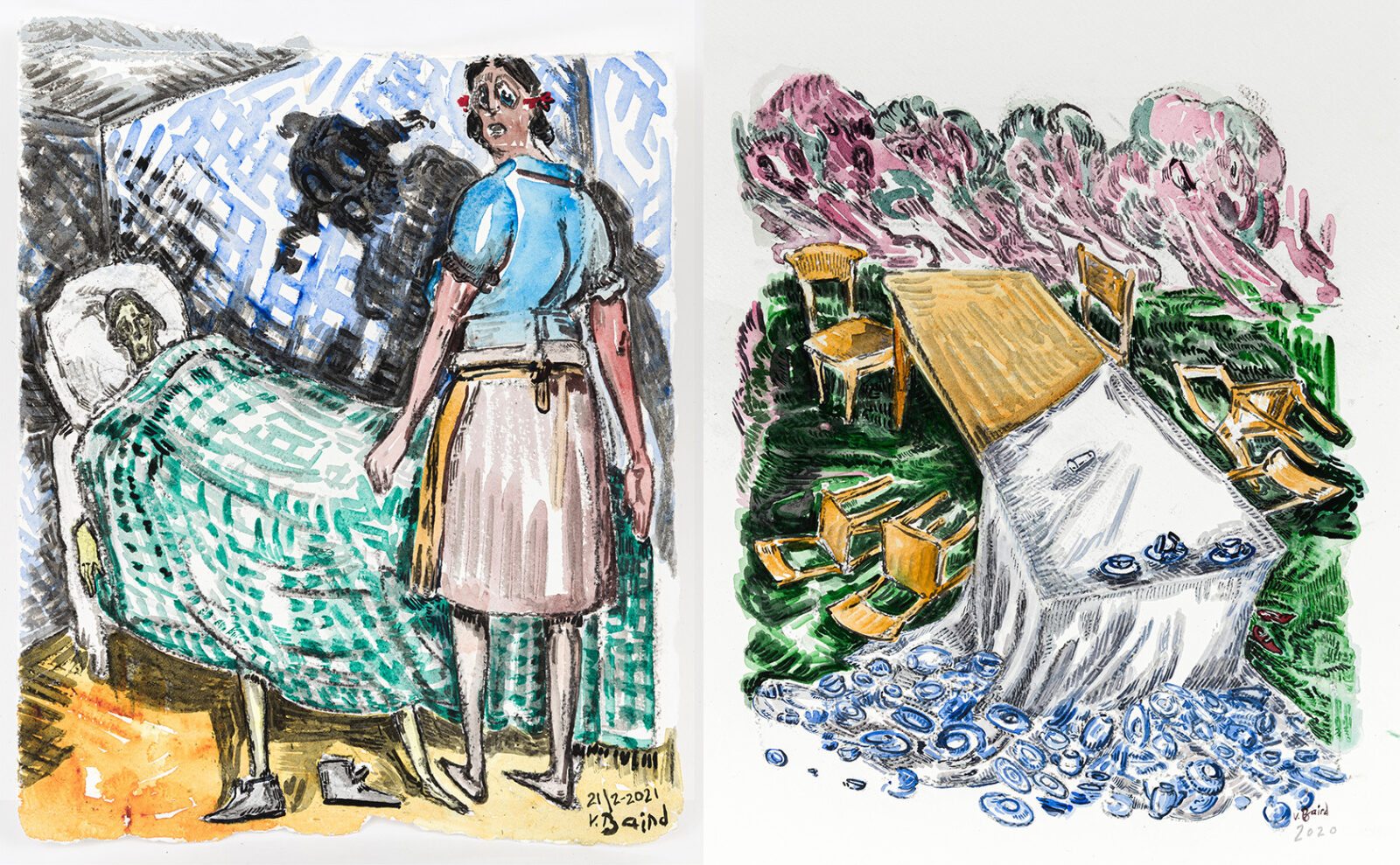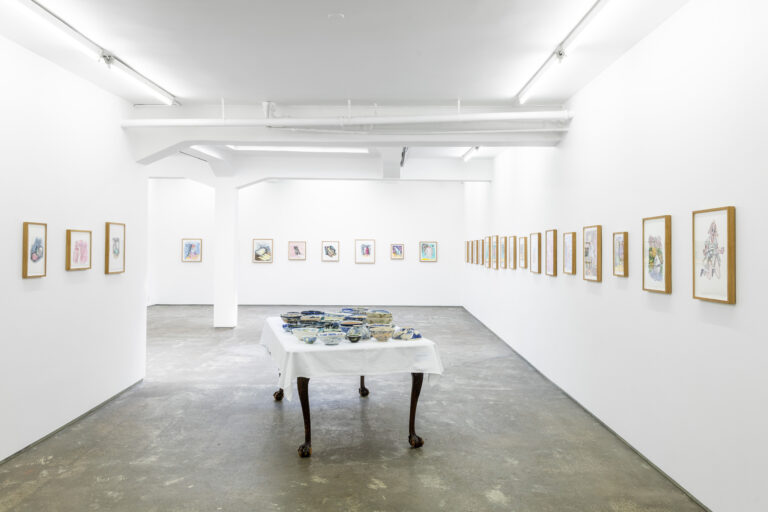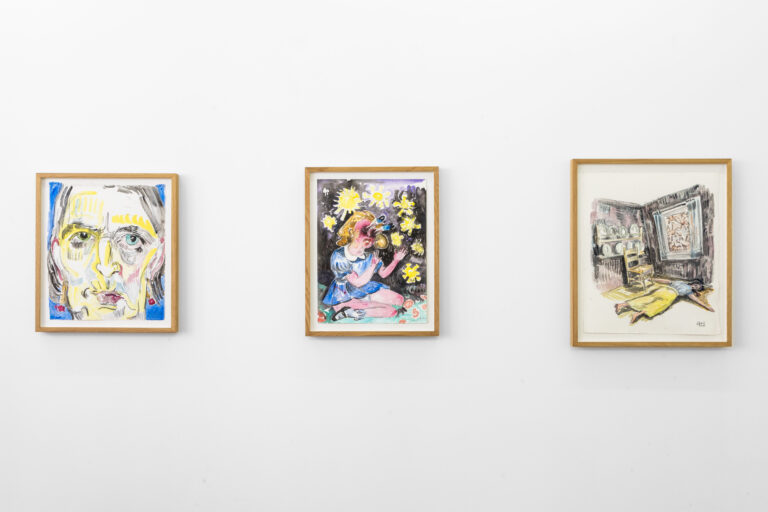The Good Times Used to Kill Me1
– Text by Roger Malbert
Vanessa Baird lives to draw – she says she has drawn every day for fifty years - and her life is her subject matter. In her images of her domestic environment, which particularly during the Covid 19 lockdown must have constituted her entire universe, she features as a character along with her mother and three children, the generations coexisting and mirroring each other as variations of a single persona - or the stages of life. She perhaps perceives her mother as her future self and her daughters as herself in retrospect; of course, as the artist she has the prerogative to project onto her subjects anything she chooses, and probably much that she does not consciously intend. Through the repeated exercise of picturing this larger-than-life family, seemingly squashed into rooms they have outgrown, getting on top of each other, their personalities have become wildly exaggerated. And since Vanessa Baird’s comic idiom is essentially anti-idealist, in fact delighting in mockery and transgression, there is no room for sentimentality or minimalist perfection or politesse.
The impulse to lay bare the most abject and embarrassing secrets of personal life is characteristic of a certain strain of anti-bourgeois avant-garde art, including feminist and performance art, and Baird’s unflinching self-exposure can be said to belong to that tradition. And the hypocritical model of the pious middle class family, a paragon of harmony and order, keeping its dirty linen hidden from public view, has long been a target of socially critical artists and writers, generally to be deflated by magnifying its tensions and internal conflicts. Vanessa Baird’s realism, however, is leavened by humour and fantasy, the capricious imagination of an accomplished illustrator of ghoulish folk tales and gruesome fables. Faces and genitals are transposed; the head performs as phallus; eyeballs burst from their sockets; a furious little girl roasts her arms in the fire; blood spurts from a decapitated neck. These alarming excesses convey the heightened emotional tenor of impassioned family life.
Baird’s use of watercolour may seem to conform to the stereotypical feminine genre of art made in the home, but the genteel manners associated with that delicate medium are skilfully and ruthlessly overturned. Similarly, in her drawings on ceramics, she subverts the placid refinement of the art form with anarchic imagery that contradicts its customary decorative function. The helpless little heads drowning at the bottom of one’s teacup are wailing to be rescued; the chains of entangled, monstrous bodies are surely designed to unsettle any complacent belief in craft for craft’s sake. Yet the rippling blue waves have a touch of lyricism; they are reminiscent of the beautiful expanses of turbulent ocean the artist evoked in her large-scale drawing in pastel You Are Something Else of 2018, and its later iterations. There, her unruly spirit of laughter and derision was harnessed to a tragic vision. A lifetime of drawing has allowed Vanessa Baird the fluency and imaginative freedom to move between comedy and pathos, tenderness and satire. Art, it has been said, is revenge on life. That’s a little strong, but her drawings certainly teach it a lesson.
1 “The Good Times Used to Kill Me,” track 11 on Gluecifer, Automatic Thrill, Konkurs Productions, 2004.
Roger Malbert is author of 'Drawing People: The Human Figure in Contemporary Art', and co-author of the forthcoming 'Drawing in the Present Tense', both published by Thames & Hudson. He was until 2018 Head of Hayward Gallery Touring at the Southbank Centre in London.'
Ceramic and porcelain bowls in the exhibition are made by artist Tone Westermark Messel









